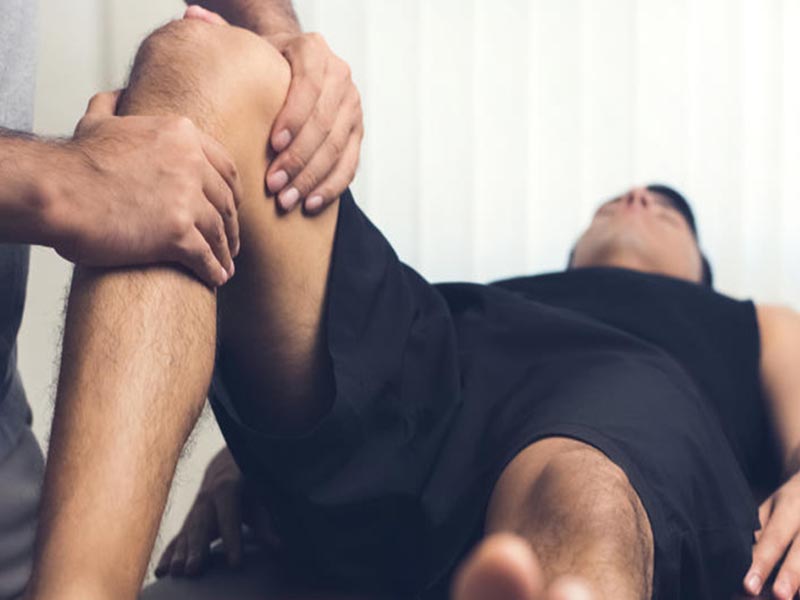For any high-performance athlete, the rate and quality of recovery are very important. Optimal recovery may provide numerous benefits during repetitive high-level training and competition. Inevitably, different interventions have varied effects on fatigue, muscle injury, recovery and performance.
Proper recovery has been shown to result in the restoration of physiological and psychological processes, so that the athlete can train or compete again. Recovery after training and competition is complex and dependent on the nature of the exercise performed and other outside and inside stressors.

Athletic performance is affected by numerous aspects and therefore, recovery interventions after injury or illness and adherence to recovery protocols should also be taken into consideration along with Practice and games; Nutrition and hydration; Sleep; Physiological and psychological individual characteristics and genetics; Recovery interventions after training and events; Environmental conditions; Travel; Employment and/or school and Social life.
Acute injuries vary greatly in presentation, severity and recovery time. An acute injury results in damage to soft tissues, including skin, fascia, cartilage, muscle, tendon, and/or ligament tissue. Damage to bones or nerves can also accompany these injuries. A damage can be accompanied by localised pain, swelling, redness or bruising, limited range of motion, decreased function.
Athletes with mild to moderate injuries can, shortly after the occurance of the injury, use the PRICE protocol during the first 24 to 72 hours to alleviate symptoms.
P: PROTECTION means all actions used to prevent further injury. For example, an injured leg or foot may be protected by limiting or avoiding weight-bearing through the use of crutches or a cane. Partially immobilising the injured area by using a sling, splint, or brace may also be a means of protection.
R: REST is mandatory to allow healing. A person should avoid activities that can stress the injured area to the point of pain or that may slow or prevent healing. Some movement, however, is beneficial. Isometric muscle contractions can improve and maintain strength and function. For example, a patient with a leg injury can repeatedly flex and relax the calf and thigh muscles while sitting still or lying down; the leg muscles “fire” and are exercised even though the leg itself does not move or bear weight. But any rehab activity has to be recommended and maintained by medical staff only.
I: ICE refers to the use of cold treatments, also known as cryotherapy, to treat acute injuries. Ice is recommended with the intent to minimize and reduce swelling as well as to decrease pain. The most common and most convenient is a simple plastic bag of crushed ice placed over a wet paper towel on the affected area. Adding of water to crushed ice optimises the contact with skin for cooling. It is important to protect the skin and limit the cold exposure to 10 to 15 minutes. Cycles of 10 to 15 minutes ON and 1 to 2 hours OFF are generally agreed upon as effective and safer than longer periods of continuous ice application.
If skin becomes mottled, red and raised where the ice contacted the skin the ice treatments should be discontinued. Redness alone, however, is common and should resolve after a few minutes of re-warming.
C: COMPRESSION is the use of a compression wrap, such as an elastic bandage, to apply an external force to the injured tissue. This compression minimises swelling and provides mild support.
An elastic bandage should be applied directly to the skin by starting a few inches below the injury and wrapping in a figure eight or spiraling manner to a few inches above the injured area. A medium amount of tension should be applied to provide ample, but not too constrictive compression. The bandage should not cause numbness, tingling, or color change of the soft tissue. Loosening the bandage should quickly alleviate these changes. It is best to remove or significantly loosen the elastic bandage when sleeping and to re-apply it when awake.
E: ELEVATION is recommended to help reduce the accumulation of fluid in the injured extremity or joint. Controlling swelling can help decrease pain and may limit the loss of range of motion, possibly speeding up recovery time.
Elevation is accomplished by positioning the injured area above the level of the heart. Elevation during most of the waking hours, if possible, and positioning the injured limb on extra pillows for sleep is probably most effective in the initial 24 to 48 hours. If there is significant swelling which continues after 24 to 48 hours, or if swelling recurs during recovery, then continued periodic elevation is appropriate.
Athletes in need of pain relief can use over-the-counter creams, patches, acetaminophen, or non-steroidal anti-inflammatory drugs (NSAIDs), such as naproxen or ibuprofen.
Some treatments can cause more harm than good. Here is a list of things that can aggravate an acute injury:
- Hot water exposure or heat treatments to the injured area;
- Stretching, movements, or weight bearing activity that is painful;
- Aggressive, deep massage;
- Ice or commercial cold packs placed directly on the skin;
- Advice contrary to common sense or widely accepted principles of basic injury care;
Many sport and exercise injuries do not require an emergent office or hospital evaluation. Nevertheless, in order to have the most accurate diagnosis and best recommendations for an expedient and safe return to your activity, seeking a consultation from a well-trained, experienced sports medicine physician is recommended.
* Article courtesy, Athletics Federation of India


